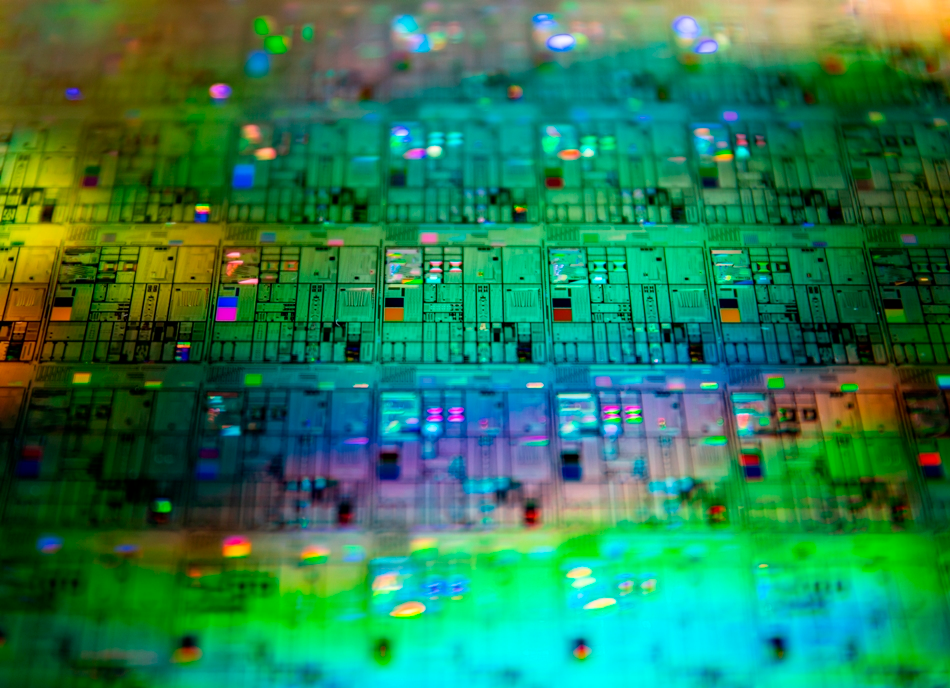Jan 24 2020
At the Oak Ridge National Laboratory of the U.S. Department of Energy, researchers have performed conducted a set of experiments to obtain better insights into quantum mechanics and to strive for advances in quantum computing and quantum networking, which could eventually find practical applications in cybersecurity and other fields.
 Researchers in ORNL’s Quantum Information Science group summarized their significant contributions to quantum networking and quantum computing in a special issue of Optics & Photonics News. Image Credit: Christopher Tison and Michael Fanto/Air Force Research Laboratory.
Researchers in ORNL’s Quantum Information Science group summarized their significant contributions to quantum networking and quantum computing in a special issue of Optics & Photonics News. Image Credit: Christopher Tison and Michael Fanto/Air Force Research Laboratory.
Quantum researchers Joseph Lukens, Pavel Lougovski, Brian Williams, and Nicholas Peters from ORNL—in collaboration with colleagues from Purdue University and the Technological University of Pereira in Colombia—outlined results from several of their latest academic papers.
These papers were published in a special issue of Optics & Photonics News, from The Optical Society, which demonstrated some of the most important outcomes from optics-related studies in 2019. Their entry was among 30 entries chosen for publication from a pool of 91.
In contrast to traditional computer “bits,” which have a value of 0 or 1, quantum bits, also known as “qubits,” have the ability to occur in a superposition of quantum states tagged 0 and 1. Thanks to this ability, the quantum systems are potential solutions for transmitting, processing, encrypting, and storing enormous amounts of information at unmatched speeds.
Photons—single particles of light with the ability to function as qubits—were investigated by the researchers by using light sources known as quantum optical frequency combs. These sources include several accurately established wavelengths. Since photons move at the speed of light, without interacting with their environment, they are a natural platform for transporting quantum information over long distances.
It is highly challenging to induce and manipulate the interactions between photons. However, these capabilities are crucial for efficient quantum computers and quantum gates, which are quantum circuits operating based on qubits.
Due to unpredictable or nonexistent photonic interactions, it is even more challenging to develop two-photon quantum gates compared to typical one-photon gates. Despite this fact, the scientists achieved various major milestones in the latest research works that overcame these difficulties.
For instance, they tweaked current telecommunications equipment employed in optics research to improve them for quantum photonics. The outcomes of their study unraveled novel ways to apply these resources for both conventional and quantum communication.
Using this equipment to manipulate quantum states is the technological underpinning of all these experiments, but we did not expect to be able to move in the other direction and improve classical communication by working on quantum communication. These interesting and unanticipated findings have appeared as we delve deeper into this research area.
Joseph Lukens, Quantum Researcher, Oak Ridge National Laboratory
A frequency beam splitter is one such tool that splits a single light beam into two frequencies, or colors, of light.
“Imagine you have a beam of light going down an optical fiber that has a particular frequency, say, red,” added Lukens. “Then, after going through the frequency beam splitter, the photon will leave as two frequencies, so it will be both red and blue.”
It was the researchers in this team who developed the first-ever successful design of a quantum frequency beam splitter using regular lightwave communications technology. This device simultaneously absorbs blue and red photons, and subsequently produces energy in the blue or red frequency.
The researchers used this technique to intentionally modify the frequencies of photons, thus tricking the unyielding particles into useful quantum-interference-based interactions. Quantum interference is the phenomenon where photons interfere with their own trajectories.
It turned out that off-the-shelf devices can deliver impressive control at the single-photon level, which people didn’t know was possible.
Pavel Lougovski, Quantum Researcher, Oak Ridge National Laboratory
Moreover, the team finished its first-ever demonstration of a frequency tritter, which divides a light beam into three different frequencies rather than two. The outcomes revealed that it is possible to carry out multiple quantum information processing operations simultaneously without damaging the data or introducing errors.
Another important achievement was the designing and demonstration of a coincidence-basis controlled-NOT gate by the researchers. This gate allowed one photon to regulate a frequency shift in another photon. This device was able to complete a universal quantum gate set, implying that it is possible to express any quantum algorithm as a sequence inside those gates.
“Quantum computing applications require much more impressive control levels than any sort of classical computing,” added Lougovski.
In addition, the researchers encoded quantum information in several independent values called degrees of freedom inside a single photon, which enabled them to detect quantum entanglement-like effects without using two separate particles. In general, entanglement involves two connected particles, where modifications to one particle’s state are also applicable to that of the other.
Lastly, the team has achieved quantum simulations of real-world physics problems. Working with researchers at the Air Force Research Laboratory, at present, they are designing small, specialized silicon chips analogous to those generally used in microelectronics to achieve improved photonic performance.
In theory, we can get all these operations onto a single photonic chip, and we see a lot of potential for doing similar quantum experiments on this new platform. That’s the next step to really move this technology forward.
Joseph Lukens, Quantum Researcher, Oak Ridge National Laboratory
Using next-generation quantum computers, researchers might be able to simulate highly complex scientific problems that cannot be investigated on existing systems, not even supercomputers. Meanwhile, the outcomes of the study could help scientists integrate photonic systems with existing high-performance computing resources.
“We have a very diverse and talented team,” stated Lougovski. “The most important thing is we’re getting results.”
This study was financially supported by ORNL’s Laboratory Directed Research and Development program.